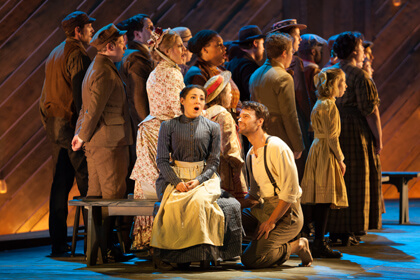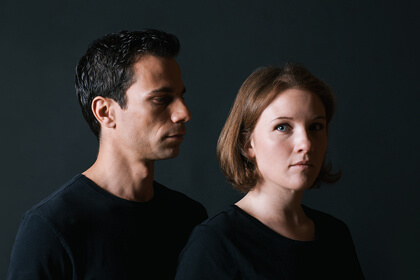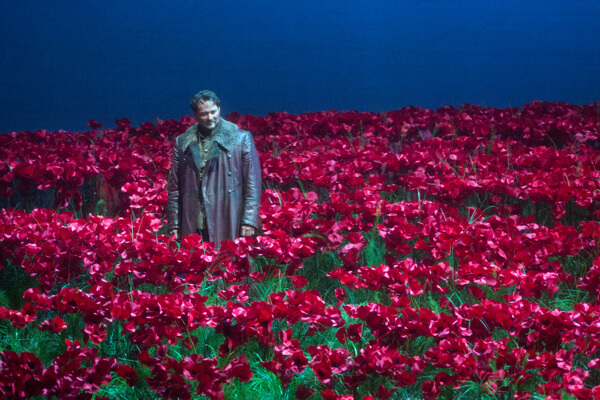Christine Brandes returns to the metropolitan area and to Mozart March 21-24. | DAN DUTCHER PR
The last time proudly out soprano Christine Brandes spoke to Gay City News was in April 2004. Bay Area critic Jason Victor Serinus profiled the dynamic, bright, quirky, and dark-silver-voiced Brandes as she readied her favorite role — Susanna in Mozart’s “The Marriage of Figaro” — for City Opera. Reflecting on this role now, which she has performed widely, Brandes said, “She sings all night and is the smartest one in the room…. and it’s the most perfect opera!”
For two decades, as an active concert and stage artist, Brandes has taken part in the early music and contemporary worlds. Locally, she’s performed at BAM and at the Mostly Mozart and Glimmerglass Festivals. Those traveling further afield may have encountered her onstage in Philadelphia, Washington, Los Angeles, San Diego and Seattle, or at many concert venues in her adopted Bay Area. Brandes shared an Oakland home with her civil union partner, the venturesome, gifted conductor Karla Lemon, who tragically died at 55 following surgery in November 2009.
Christine Brandes talks about early influences, early music, life in the Bay Area and with Karla Lemon
Gay City News spoke with Brandes as she planned her return to the metropolitan area for a March 21-24 debut with the fine New Jersey Symphony at venues in Newark, New Brunswick, and Princeton. She will perform more Mozart — his sublime “Requiem” (“Such a fantastic and moving work!”) —under music director Jacques Lacombe, with noteworthy colleagues including Susanne Mentzer and Gordon Gietz.
DAVID SHENGOLD: What’s your background?
CHRISTINE BRANDES: I am a total Buckeye. Born and raised in Canton, Ohio. I went to OSU and my graduate degree’s from Case Western Reserve. I was raised in a musical home and in a church that had a strong classical music tradition. I remember crawling through the “tunnel” under the pews while the choir and members of the Cleveland Orchestra rehearsed. Quietly, of course!
I grew up with all the great sacred works of Bach, Handel, Mozart, and Haydn, as well as being crazy for organ music — especially Bach, Hindemith, and Messiaen. Maybe I was a weird kid? Public school — great training both in ensembles, vocal and instrumental, and then elective courses in theory and composition.
DS: How about singing and vocal music per se? What kinds of singers and singing did you like?
CB: Outside of what I heard at church, I didn’t listen to a lot of recordings of singing. I loved Beverly Sills, Leontyne Price, and Luciano Pavarotti.
Baroque music was what I heard most, and it had a very deep place of resonance for me. Plus, I was vocally well suited to it. It would have been a tragedy if all my little soul really wanted to sing was Puccini!
DS: What and who brought you to the Bay Area? Why do you think there’s such a rich early music scene there? And why has early music seemed more open and less closety than opera or the symphonic world?
CB: I started working with Nicholas McGegan and Jeffrey Thomas while living in Chicago but it was falling in love that caused me to move. Shockingly, I have lived here for 15 years. Hard to believe, given how at home and connected I am to the East Coast and New York City in particular.
I think the strong early music foundation in the Bay Area grew out of the same simmering pot of counterculture, back-to-the-land, granola lovers — people seeking a different, for them, more authentic way of going through the world…. and playing Handel. There were plenty of great players, singers, and musicologists. A perfect storm.
Given the slightly counterculture ethos from which the early music movement sprang, I think it has been much more open and easy with GLB and now trans musicians. Perhaps there were so many molds being broken that conductors, singers, and players didn’t need to feel weighted down by the same kinds of personal expectations.
I myself did not have a particularly remarkable coming out story. I had dated boys and girls in high school and was married to a man, widowed, and then went down another road. It has never been much of an issue.
DS: Why do you think that so many more female singers are out than male singers — always excepting countertenors?
CB: Hmmm. No idea. Maybe we are braver and more confident? Content? Maybe is it just seen as more acceptable or tolerated by the broader public?
DS: How did you meet Karla? How long were you together? Were you able to work together much professionally?
CB: She was looking for a soprano soloist for a “St. Matthew Passion” and a friend had recommended she come to a concert I was singing. Happily, Karla’s old pal, Lorraine Hunt Lieberson — just Hunt at the time — was also hired to sing that concert. She was the prime instigator of our getting together. We were together for 14 years.
We did have several opportunities to work together, both at Stanford University, where she was conducting, and in professional settings. Some baroque music, but mostly 20th and 21st century works.
DS: To what extent do you see the insights of HIP [historically informed performance] being absorbed in mainstream performances?
CB: I think so many mainstream orchestras have been exposed to HIP through guest conductors coming in for “Messiah” and “The Four Seasons” that they have been adapting. Mind you, it’s still possible to hear Handel performed as if by [Thomas] Beecham!
I am always interested in the composer’s intent — or getting as close to what we can divine that to be from clues on the page. And that goes for any composer in any time. I have loved premiering new works and working closely with composers.
DS: Do you have favorites among your many recordings?
CB: Yikes! So hard to say, as I rarely if ever listen to a recording of my own more than once. On occasion, like on radio interviews, I will hear snippets and think, “Hey, not so bad.” But I am my worst critic. That said, even though the Italian is not so hot, I like the first Scarlatti cantata disc with Arcadian Academy and the Purcell disc with them and a recording of the Eric Moe’s “Sonnets to Orpheus.” It’s a cycle that was written for Karla and me using a staggeringly great translation by Stephen Mitchell of Rilke’s sonnets.
DS: Do you have upcoming and ongoing projects that excite you?
CB: Yes, just this fall I premiered another piece by Eric Moe, which was written for the fabulous Brentano String Quartet. It’s a setting of four love poems by May Swenson. We’ll be playing it again next season at the 92nd Street Y, along with the Haydn “Arianna a Naxos.” In two months, I’ll be giving the premier of another work for soprano and string quartet. This one is with the Cypress String Quartet and is by Philadelphia’s [out] Jennifer Higdon! In collaboration with two dancers, I’m working on a project examining the fierce and powerful women of Greek and Hindu mythology.
DS: What do you like to do when you’re not engaged with music?
CB: To cook, garden, play with my nephews. I kayak and body surf — surfing with less success — when I can force myself into a wetsuit! Outside of music, I guess my greatest joy is in time spent with my family and dear friends.
CHRISTINE BRANDES | Mozart’s “Requiem” | New Jersey Symphony Orchestra | Newark: Mar. 21 at 1:30 p.m.; Mar. 23 at 8 p.m. | Princeton: Mar. 22 at 8 p.m. | New Brunswick: Mar. 24 at 3 p.m. | njsymphony.org
David Shengold (shengold@yahoo.com) writes about opera for many venues.


































